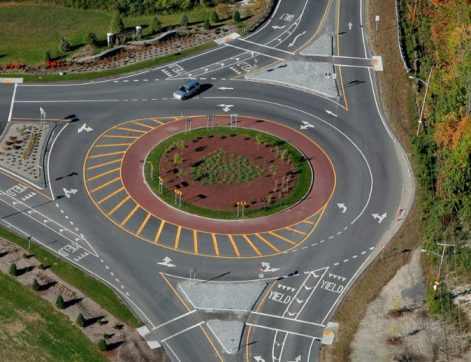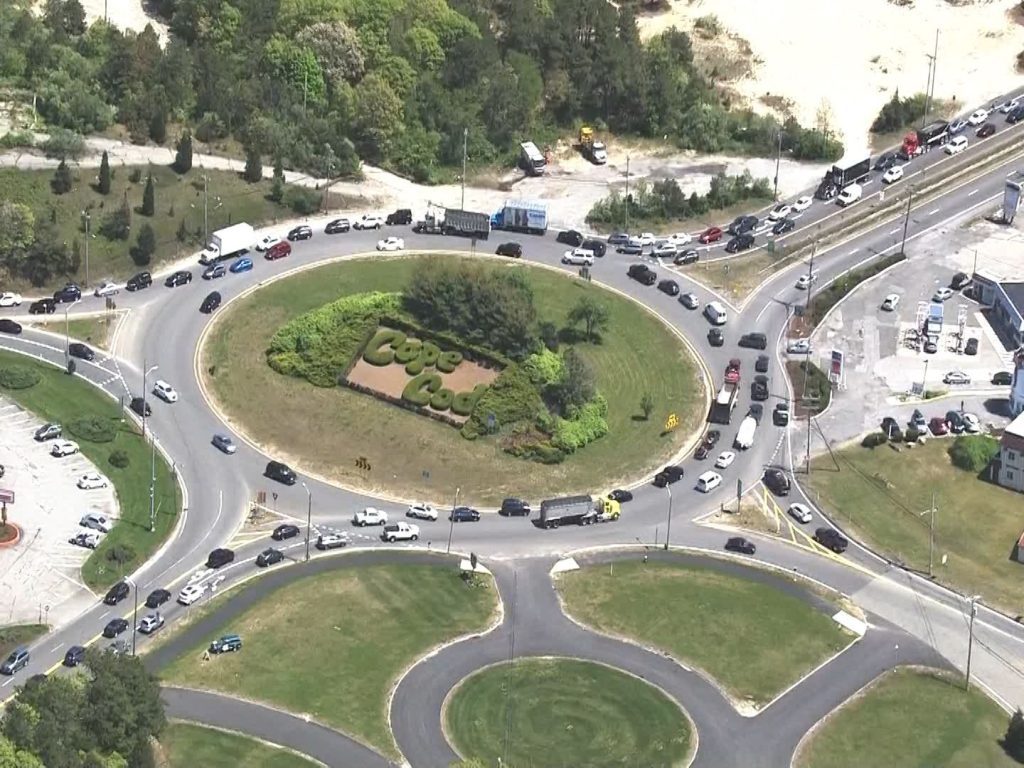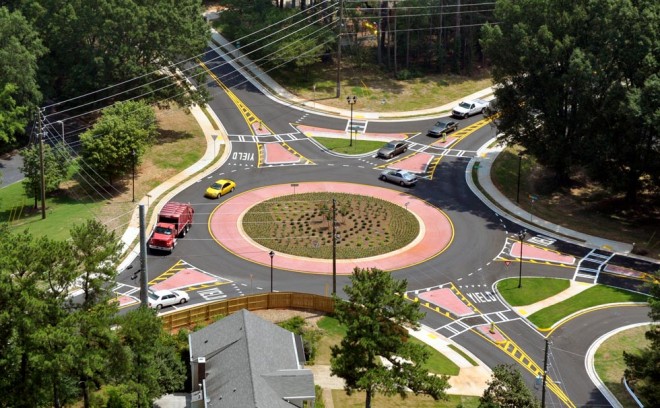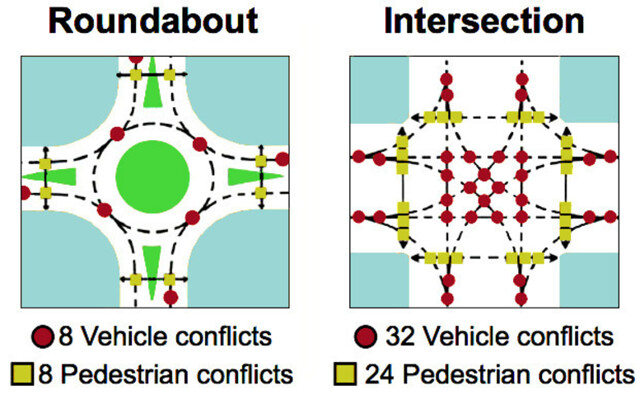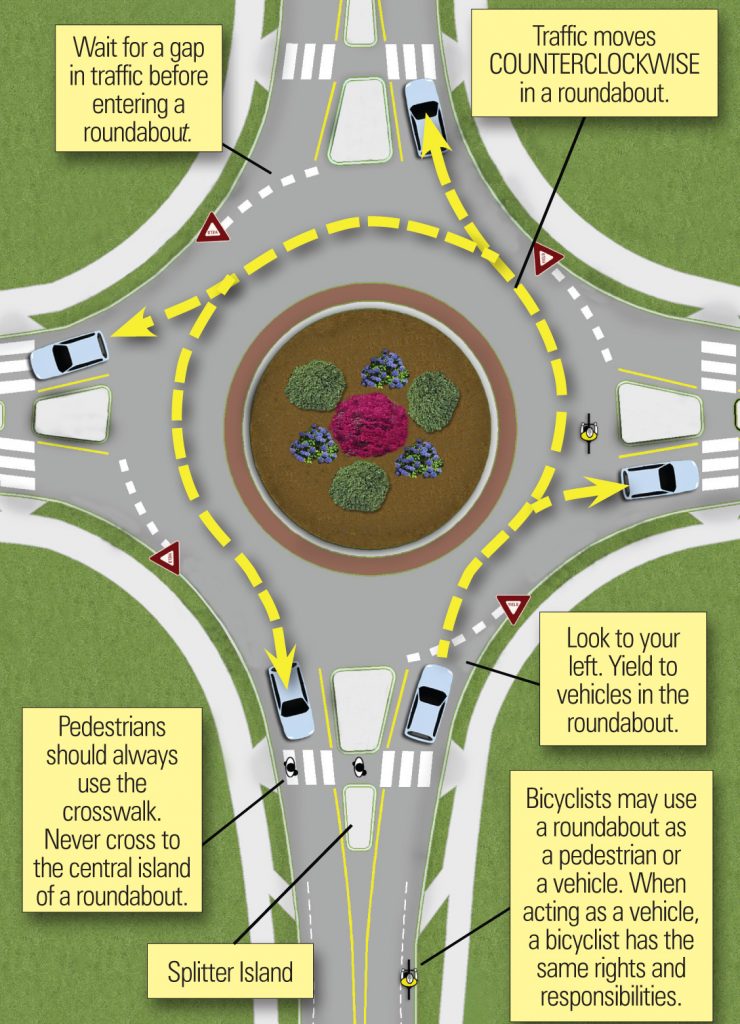People generally use the terms “traffic circle”, “rotary,” and “roundabout” interchangeably, and they seem to dread them all. While by definition these all refer to the circular movement of traffic around a central island, there are distinct differences in both layout and function between modern roundabouts and their predominantly antecedent rotaries. The term “traffic circle” was simply coined by the public to reference rotaries and/or roundabouts, so this term does not actually identify a third type of configuration.
Rotaries were designed to accommodate relatively high speeds of travel to provide a transition between major intersecting roadways without the construction of an interchange. The size of a rotary’s central island ranges from 300 to 600 or more feet in diameter, providing room between each junction for the necessary weaving area. In addition to the central island that traffic flows around, the rotary has splitter islands on each leg to extend the separation between the opposing directions of travel, as seen in the image below. The traffic control for a rotary can vary. Approaching vehicles may have to yield to traffic already in the rotary, or the opposite may be in effect. Sometimes rotaries can even incorporate the use of a traffic signal at one or more junctions. Rotaries were intended to accommodate vehicular traffic and rarely incorporated pedestrian movements.
Roundabouts, though they may look similar due to the presence of splitter and central islands, are much smaller than rotaries, use approach angles to reduce vehicle speeds, and accommodate the movements of pedestrian and bicycle activity in addition to vehicular travel. Roundabout outer diameters range in size from 90 feet for
In addition to the differences between roundabouts and rotaries, noted above, roundabouts serve to reduce the extent of traffic incidents compared to both
Roundabouts are ideal for intersections with moderate vehicle volumes but cannot handle the same capacity as multi-lane signalized intersections. Roundabouts are also highly recommended for traffic calming and for intersection that have multiple approaching roadways.
Though there are great benefits to the installation of roundabouts, navigating one requires a different maneuver than we are used to. With
With the ability to handle a considerable volume of traffic, accommodate all users, and increase safety, roundabouts will likely continue to spread throughout the country and become more common locally. A good local example of roundabouts is the entrance to Twin River Casino in Lincoln, RI (pictured below).
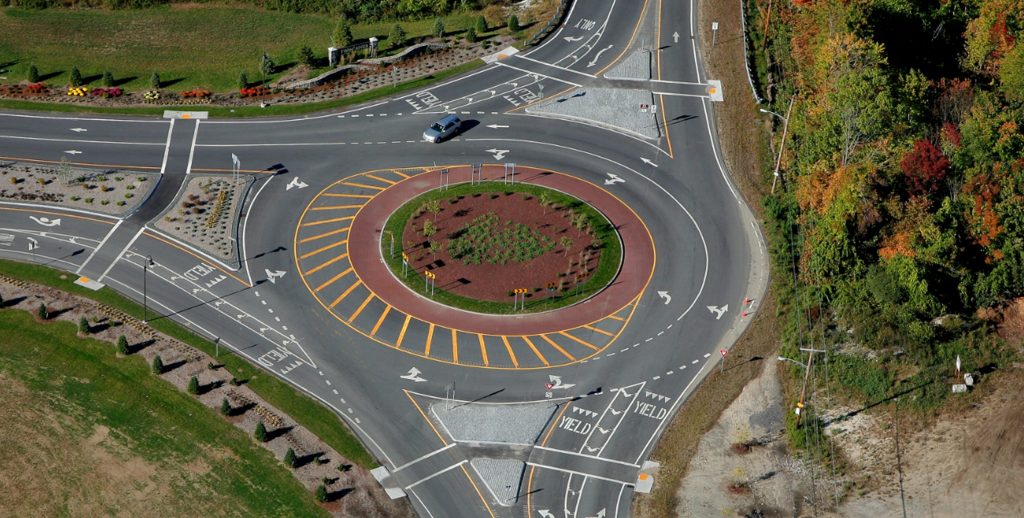
The third week of September is designated as “National Roundabouts Week” by the Federal Highway Association (FHWA) to raise awareness of the benefits of this traffic-calming design measure. The FHWA estimates that there are over 4,000 roundabouts in the United States (including the 125 in Carmel, Indiana!).
In Honor of National Roundabout Week, the Federal Highway Administration has compiled a series of resources from communities across the country. Learn more here.
Here are a few of my favorites:
- Roundabouts move everyone safely, including trucks and large vehicles, as the Pennsylvania DOT explains
- Scott County, Minnesota, proved that good things come in small sizes. Learn more about the mini roundabout next to the Community Center and Middle School campus in Shakopee
- The Minnesota Local Road Research Board shows drivers how to navigate a multi-lane roundabout and what to do when large vehicles and emergency vehicles are traveling through the roundabout

